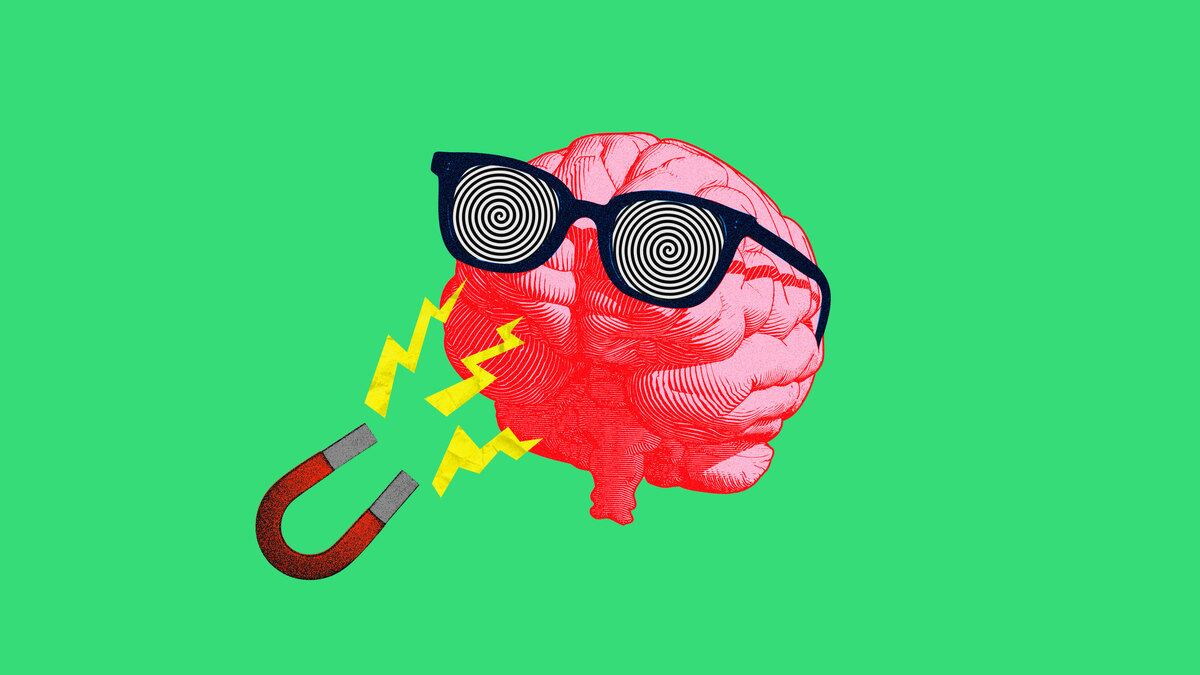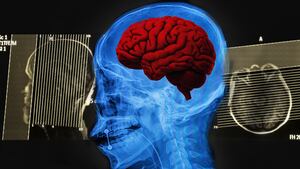When you think of hypnosis, you’ll likely conjure up images of strange men with twirly mustaches dangling a pocket watch in front of your eyes while they drone, “You’re getting sleepy… very sleepy.” Contrary to popular belief, though, hypnosis is much more than that.
There’s a growing number of scientists who believe that it could offer an effective, drug-free approach to treating physical and psychological issues like chronic pain, depression, and anxiety. In fact, the practice is even being taught in some of the world’s top medical schools like Stanford Medicine.
“[We] know that learning about hypnosis from nonscientific sources is associated with more negative views of hypnosis, so it's important for us to provide science-backed information about hypnosis,” Afik Faerman, a psychiatric researcher at Stanford Medicine, told The Daily Beast. “Although it is not yet mainstream in medical and psychiatric departments, interest in and use of hypnosis is increasing thanks to the work of scientists and clinicians across the world.”
While hypnosis offers a lot of promise in treating certain issues, it doesn’t work for everyone. Faerman explained that “only about 20 percent” of the population is considered highly hypnotizable. If there was a way to make the brains of that other 80 percent more susceptible to hypnosis, it could “open the door for improving therapy.”

Nolan Williams demonstrates SAINT, the magnetic brain stimulation therapy he and his colleagues developed, on Deirdre Lehman, a participant in a previous study of the treatment. Faerman's team built off of Williams' research to develop SHIFT.
Steve Fisch / Stanford UniversityFaerman is the lead author of a study published Thursday in the journal Nature Mental Health that used electric stimulation on certain areas of the brain to temporarily make people more hypnotizable. The method—dubbed Stanford Hypnosis Integrated with Functional Connectivity-targeted Transcranial Stimulation (SHIFT)—could create a path to an effective method of pain reduction without the need for addictive and expensive opioids.
“We found that active SHIFT was associated with increased hypnotizability, while the sham stimulation did not,” Faerman explained. “It was also interesting that participants' guesses as to whether they received active or sham treatment were not associated with the change in hypnotizability.”
SHIFT relies on a process called transcranial magnetic stimulation (TMS), which involves essentially zapping your brain with big magnets. While that might sound downright scary, it’s actually a fairly non-invasive and pain-free procedure that involves placing two magnetic paddles over certain regions of the patient’s head and pulsing it with electricity.
TMS has also been shown to be an incredibly effective treatment for things like depression and PTSD. One study has even shown that 60 percent of patients who had undergone the process found immense relief in depressive symptoms.
The science behind it is fairly straightforward: researchers found that parts of the brain were underactive in people with depression, so they used TMS to stimulate those areas—resulting in less depression. The same idea applies to hypnosis, which is linked to areas of the brain called the dorsolateral prefrontal cortex (DLPFC) and the anterior cingulate cortex (ACC).
“Modulating the DLPFC and increasing its information sharing with the ACC could, theoretically, increase hypnotizability,” Faerman explained.
To test the idea, the team at Stanford recruited 80 volunteers with fibromyalgia, which is a condition that causes chronic pain throughout the body. Half of the participants received the SHIFT, which sent 800 pulses of electricity to the patient’s DLPFC. Meanwhile, the other half received a sham treatment, which did nothing to increase hypnotizability.
The team discovered that those who underwent SHIFT became significantly more hypnotizable, scoring one point higher on a 10-point hypnotizability scale (which apparently exists). Meanwhile, the group that received the sham treatment saw no change in their susceptibility to hypnosis. The researchers also found that the effects wore off after just an hour.
While it’s still early, the results are incredibly promising. Not only can the process help treat those with chronic pain using hypnotherapy, but it could open the doors to treatments beyond that.
“[Scientific] evidence points out that hypnosis is effective for anxiety and stress, depression, smoking cessation, and more,” Faerman said. “In our current and future work, we’ll work on adapting SHIFT for clinical use and testing it with clinical applications of hypnosis.”
In his eyes, Faerman envisions a future where patients will be able to go into their clinicians, undergo SHIFT, and then receive a hypnotherapy session to help alleviate their pain. In doing so, they’ll be able to receive even better care—without the need for pills. “This will allow us to offer effective, drug-free treatments and improve the well-being of our patients, but it will also save time and money for the patients and our healthcare system.”





